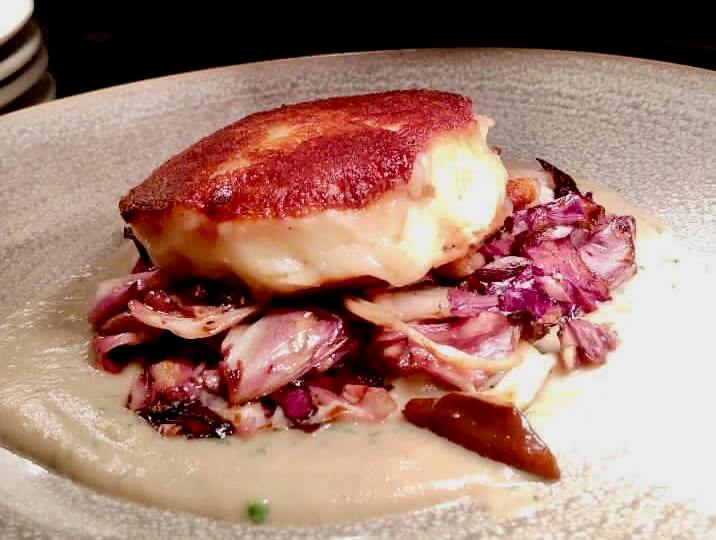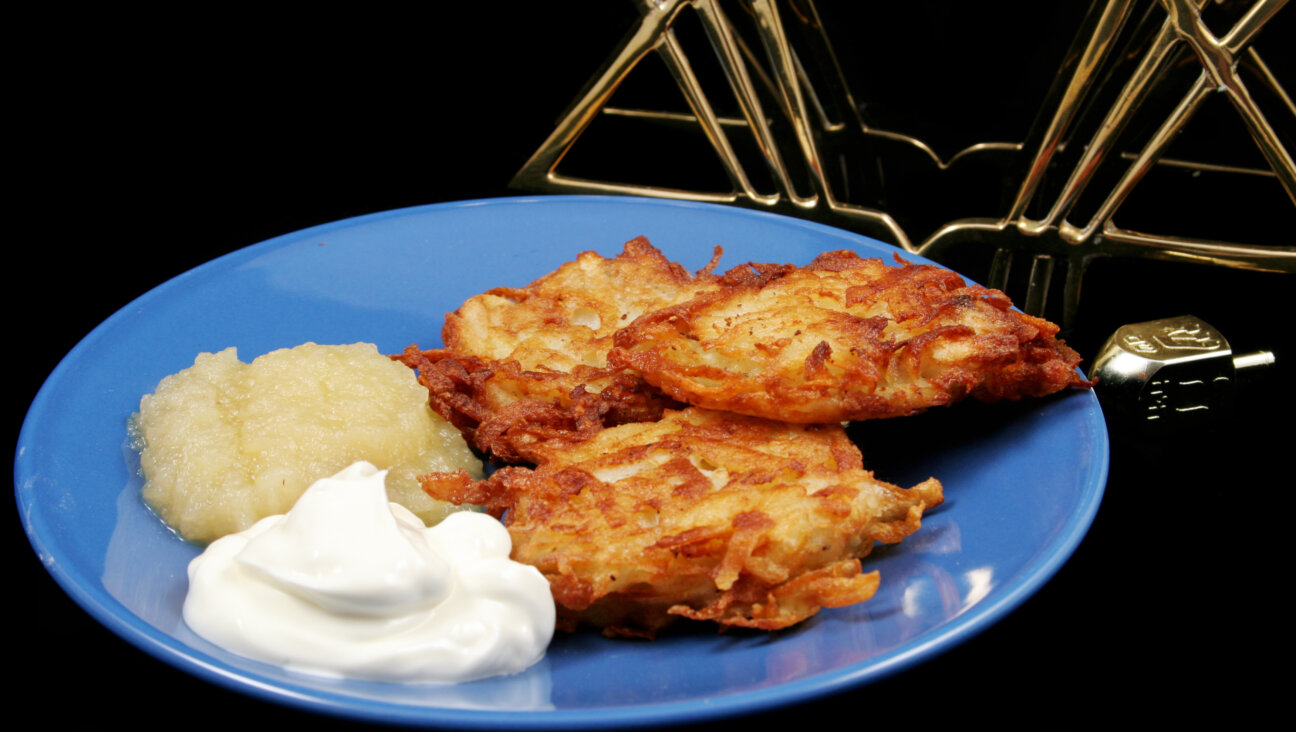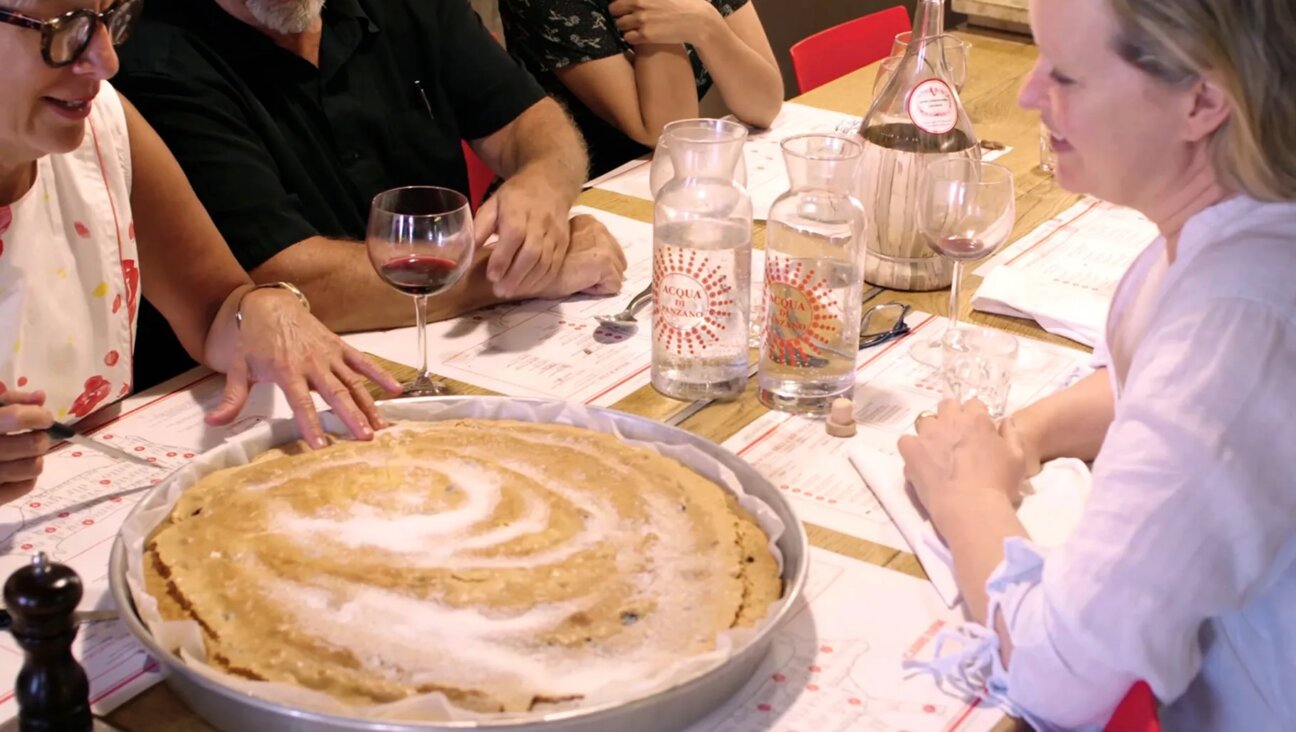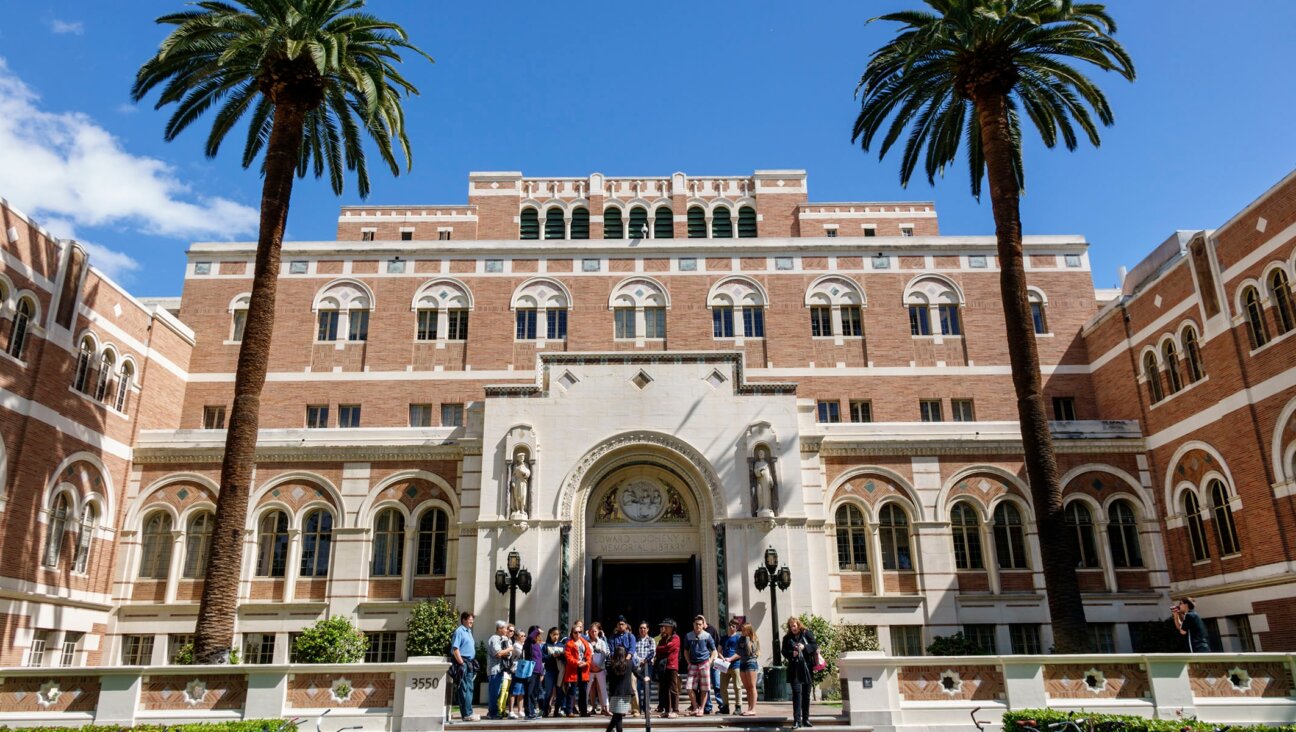Chocolate Hamantaschen Filled With Serious Fun
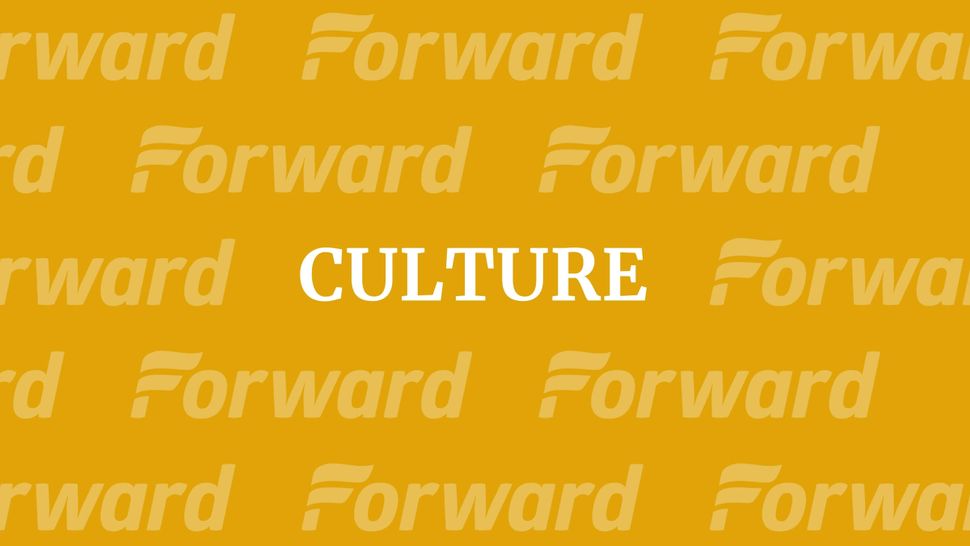
The author wondered why chocolate was usually left out of the dough of a classic Purim treat. Photograph by Tami Ganeles/Weiser/The Weiser Kitchen.
Chocolate is in many ways the quintessential example of a food that is both Old and New World. Cacao, the bean from which chocolate is derived, was well known to both the Aztec and the Mayan peoples. It was a bitter powder ground from pods and prized for its alleged aphrodisiac properties.
The Spanish Conquistadors took cocoa back to Europe with them, where they concocted a wildly popular drink with the addition of sugar (also a New World food) and copious amounts of milk or cream. There you have it: the invention of the hot chocolate we would likely recognize today.
Sephardic Jews, so often the vectors of flavors around the world, both as traders and through their post-Inquisition disbursal, brought chocolate with them to France and arguably, to Italy — and perhaps even eventually back to the Americas. The dough of Old World hamantaschen — the cookie that defines Purim for so many Ashkenazim — has staunchly fallen into two camps: It’s either a cookie with a touch of orange, or a yeast dough. I adore both, but wondered why chocolate was usually left out of the mix, leaving all the cook’s creativity for the fillings. The way I see it, sometimes a fat pinch of global fun is in order. So for the festive holiday of Purim, I decided it was time to create a couple of new cookies that crisscross the Old and New Worlds.
Here are two recipes for chocolate hamantaschen filled with delicious fun: Chocolate-Nutella Halvah Hamantaschen and Chili-Chocolate Hamantaschen With Dulce de Leche Filling.
Tami Ganeles-Weiser is a food anthropologist, trained chef, recipe developer, writer and founder of TheWeiserKitchen.

I hope you appreciated this article. Before you go, I’d like to ask you to please support the Forward’s award-winning journalism this Passover.
In this age of misinformation, our work is needed like never before. We report on the news that matters most to American Jews, driven by truth, not ideology.
At a time when newsrooms are closing or cutting back, the Forward has removed its paywall. That means for the first time in our 126-year history, Forward journalism is free to everyone, everywhere. With an ongoing war, rising antisemitism, and a flood of disinformation that may affect the upcoming election, we believe that free and open access to Jewish journalism is imperative.
Readers like you make it all possible. Right now, we’re in the middle of our Passover Pledge Drive and we need 500 people to step up and make a gift to sustain our trustworthy, independent journalism.
Make a gift of any size and become a Forward member today. You’ll support our mission to tell the American Jewish story fully and fairly.
— Rachel Fishman Feddersen, Publisher and CEO
Join our mission to tell the Jewish story fully and fairly.
Our Goal: 500 gifts during our Passover Pledge Drive!








